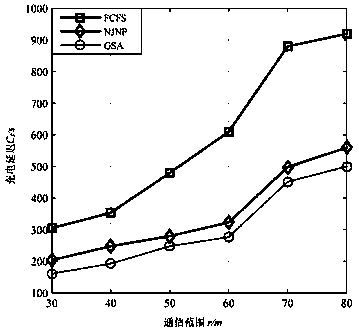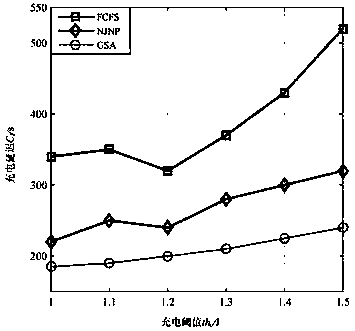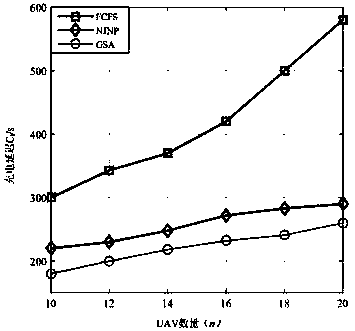Laser-powered UAV cluster charging scheduling method
A scheduling method and laser energy supply technology, applied in current collectors, charging stations for mobile device charging, electric vehicles, etc., can solve problems such as relatively few researches on wireless laser charging for drones, reduce charging delay time, guarantee Survival rate, effect of increasing time
- Summary
- Abstract
- Description
- Claims
- Application Information
AI Technical Summary
Problems solved by technology
Method used
Image
Examples
Embodiment Construction
[0031] A laser-powered unmanned aerial vehicle cluster charging scheduling method, the specific steps include:
[0032] 1. Establish a laser wireless charging network model for drones:
[0033] Such as image 3 As shown, a laser wireless charging network model includes a group of randomly deployed rechargeable UAVs, and a laser charging station LC that can supplement the energy of UAVs in the charging network area. UAVs in the charging network have the same initial energy, and their energy consumption rate is fixed. However, within a certain period, since their states are different, their energy consumption is different from each other. LC can only charge one UAV at a time, and it has enough energy to charge all UAVs in the network. The received power of each UAV is obtained by formula (1).
[0034] 2. Charging scheduling algorithm based on gravity search algorithm:
[0035] (1), fitness function:
[0036] In charging scheduling, the charging request queue is expressed a...
PUM
 Login to View More
Login to View More Abstract
Description
Claims
Application Information
 Login to View More
Login to View More - R&D
- Intellectual Property
- Life Sciences
- Materials
- Tech Scout
- Unparalleled Data Quality
- Higher Quality Content
- 60% Fewer Hallucinations
Browse by: Latest US Patents, China's latest patents, Technical Efficacy Thesaurus, Application Domain, Technology Topic, Popular Technical Reports.
© 2025 PatSnap. All rights reserved.Legal|Privacy policy|Modern Slavery Act Transparency Statement|Sitemap|About US| Contact US: help@patsnap.com



